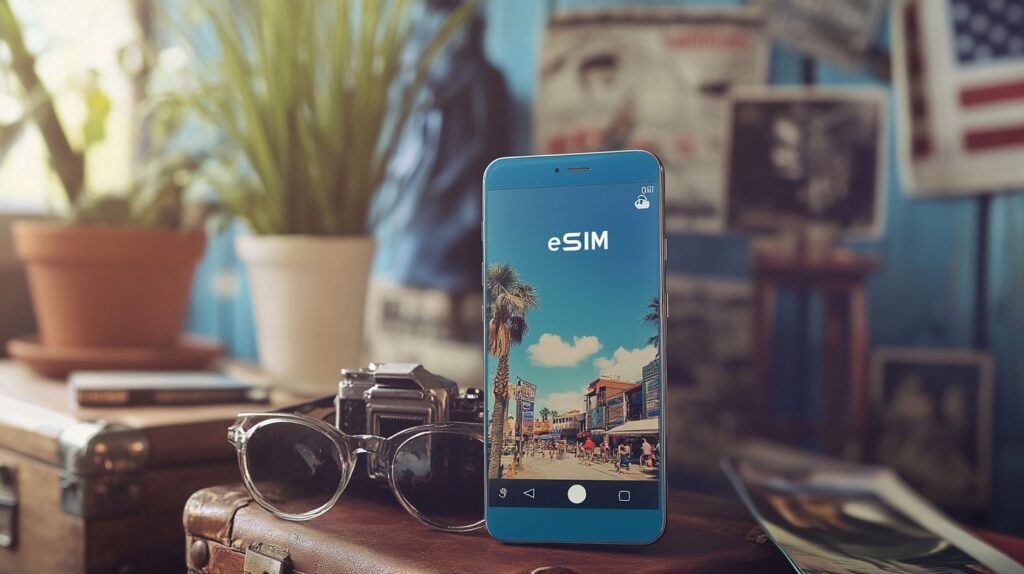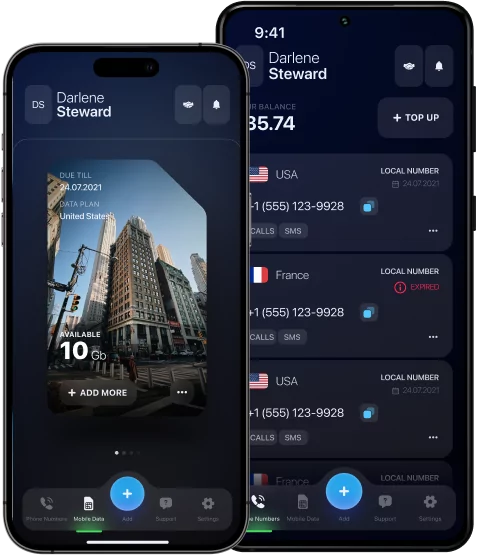Mini SIM Card vs. eSIM: The Evolution of Mobile Connectivity and What It Means for You

Mobile communications have changed a lot in the last few years. This is due to the development of eSIM technology and the transition from conventional SIM cards to eSIM. With the advent of this cloud technology, there is no need to use physical cards. eSIM has a built-in chip in the smartphone, which opens up many online communication opportunities.
Do you still need to know what an eSIM is and why it is the future of cellular communications? Let’s figure it out together and compare Mini SIM card vs. eSIM to choose the most convenient and modern option.
What is a Mini SIM Card?
The heyday of Mini SIM cards occurred in the 90s of the last century. At that time, it was a real mobile revolution. Foremost, because of its size: the first mini SIM cards were 25×15 mm — which largely set it apart from its predecessors (large metal cards with contacts that needed to be used in landlines).
In addition, the advent of Mini SIM cards has opened the way for the development of mobile phones of different sizes and with different functionalities. At the same time, the subscriber can stay in touch when using the phone just by inserting a small plastic chip into it.
Over time, Mini-SIM gave way to new formats like Micro-SIM and Nano-SIM but its role in the development of mobile technologies cannot be overestimated.

Understanding eSIM Technology
eSIM (embedded SIM card) is a SIM card built into a smartphone that does not have a physical carrier, and the entire process of operation is transferred to a digital format. All information about the mobile network and the device is stored directly in the device’s built-in chip. This chip is easy to customize and reprogram for any purpose. This feature allows you to quickly switch between mobile operators and tariff plans. The entire process of selection, purchase, connection, and activation takes place online without the need to visit the mobile operator’s office.
The main advantage of eSIM technology is flexibility and compactness. At the same time, using eSIM opens up new smartphone design possibilities, since there is no need for a physical SIM card slot. eSIM also provides users with the ability to manage multiple rooms on one device, which is convenient for frequent travelers or those who use different rates for work and personal needs.
Key Differences Between Mini SIM Card and eSIM
It’s time to compare the Mini SIM card and eSIM in more detail to determine the most convenient option:
| Characteristics | Mini SIM Card | eSIM |
|---|---|---|
| Installation | There is a physical card | There is no physical card. |
| Compatibility | Used in most mobile phones, tablets, and other devices. | Requires an eSIM-enabled device. |
| Device Support | Requires a SIM card slot. | Allows creating of more compact and lightweight devices. |
| Functionality | Can contain only one operator account. | Supports multiple numbers and tariff plans. |
| Security | Mechanically protected — to remove the card, you need to insert it. | Has a high level of security with the ability to remotely manage connections. |
So, eSIM provides users with flexible and convenient conditions for connecting and managing mobile communications online. While the Mini SIM card is still popular and widely used as a convenient communication tool.
Benefits and Drawbacks of Mini SIM Card vs. eSIM
However, the Mini SIM card and eSIM have both positive and negative features. Let’s look at each one separately.
Mini SIM Card
| Advantages | Disadvantages |
|---|---|
| ✔️ Wide Compatibility | ❌ Limited Flexibility |
| ✔️ Ease of Use | ❌ Outdated Format |
| ✔️ Market Availability | ❌ Insecurity |
*Note: Mini SIM cards will be an ideal option for those who use an old or budget device that does not support eSIM technology. In addition, this SIM card format will be convenient for those who often change SIM cards and do not want to delve into the device settings.
eSIM
| Advantages | Disadvantages |
|---|---|
| ✔️ Flexibility and Convenience | ❌ Compatibility |
| ✔️ Compact and Security | ❌ Dependence on Device Settings |
| ✔️ Multiple Accounts Support | ❌ Limited Support in Some Countries |
*Note: eSIM is ideal for avid travelers who want to be always connected in new countries without connecting to expensive roaming. In addition, eSIM will work well on modern devices that support the technology and help simplify the process of connecting to a mobile network. eSIM is also suitable for those who want to use multiple numbers simultaneously on the same device.

How Mini SIM Cards Work in Older Devices
In older models of mobile phones, the Mini SIM serves as the main way to connect to mobile operators. To replace it requires physical intervention in the phone: it is necessary to open the SIM card slot, remove the old chip, and insert a new SIM card.
Here are a few features of the Mini SIM in older devices:
- Availability of a physical card. You need a physical media to connect.
- Limited functionality. You cannot connect multiple operators at once.
- It cannot be configured remotely. To set up a SIM card, you must be physically present at the mobile operator’s office.
However, there are several problems when switching to eSIM from an old device:
- Lack of support for eSIM technology. Older models do not have an integrated chip for eSIM.
- Technical limitations. Older models have a number of technical limitations that hinder the development of technology.
- The need for a new device. Anyway, in order to switch to eSIM, you need to purchase a smartphone that supports the technology.
For users of older mobile devices, switching from Mini SIM to eSIM will require not only changing the card but also buying a new device that supports modern technology.
Advantages of eSIM for Modern Mobile Connectivity
At the same time, eSIM is an ideal mobile communication tool for modern smartphone models. eSIM offers a number of key advantages that make the use of technology convenient and flexible:
- Remote configuration. The entire process of selecting, connecting, and activating eSIM takes place online. You can connect a new tariff or change settings directly from the device menu without leaving home.
- Support for multiple eSIM profiles. eSIM technology allows you to connect and use several profiles at the same time: personal, work, etc. Switching between them takes place without the need to change the card.
- Smooth communication. eSIM technology provides stable connectivity around the world where coverage is available.
eSIM technology not only meets all modern mobile communication requirements but also offers many advantages of use and a huge field for development.

Which Option is Right for You? Choosing Between a Mini SIM Card and an eSIM
When choosing between a Mini SIM card vs. eSIM, you need to consider factors such as the type of device, the need for mobile networks, and the frequency of travel. However, there are some practical tips on how to choose between these options correctly:
- An old or budget device. For such gadgets, the ideal option would be a Mini SIM card.
- A modern smartphone. Almost all modern smartphones support eSIM technology. Therefore, it is better to take advantage of the technology.
- Frequent international travels. When traveling frequently, it is better to give preference to eSIM technology, as it opens up various advantages of connecting to special tariff plans.
At the same time, eSIM Plus, one of the market leaders, which provides various tariff plans at reasonable prices, and also stands out for the quality of communication and security, can become the ideal option for an eSIM provider.





